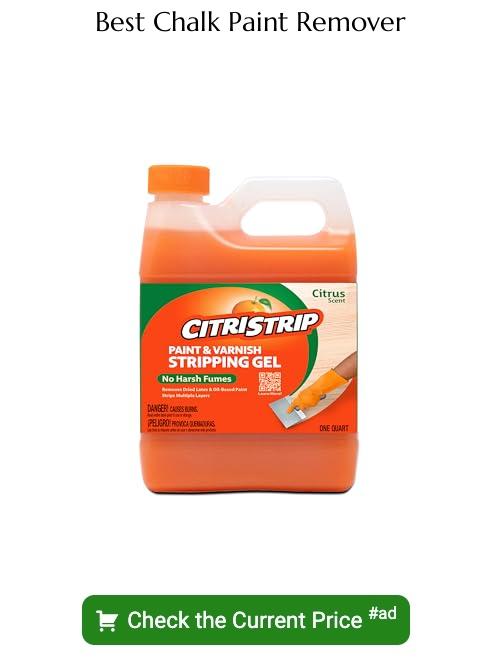Last updated on
Dismantling chalk paint becomes a breeze when you use vinegar because it’s an effective, natural, and budget-friendly solution.
Key takeaways:
- Chalk paint is celebrated for its matte finish and easy application process.
- Vinegar is an effective and natural solution for removing chalk paint.
- Prioritize personal safety by wearing protective gear and working in a well-ventilated area.
- Gather essential materials like white vinegar, warm water, spray bottle, plastic scraper, and cleaning cloths.
- Use vinegar to break down the paint, scrub the surface, rinse, and perform post-removal clean-up.
Understanding Chalk Paint
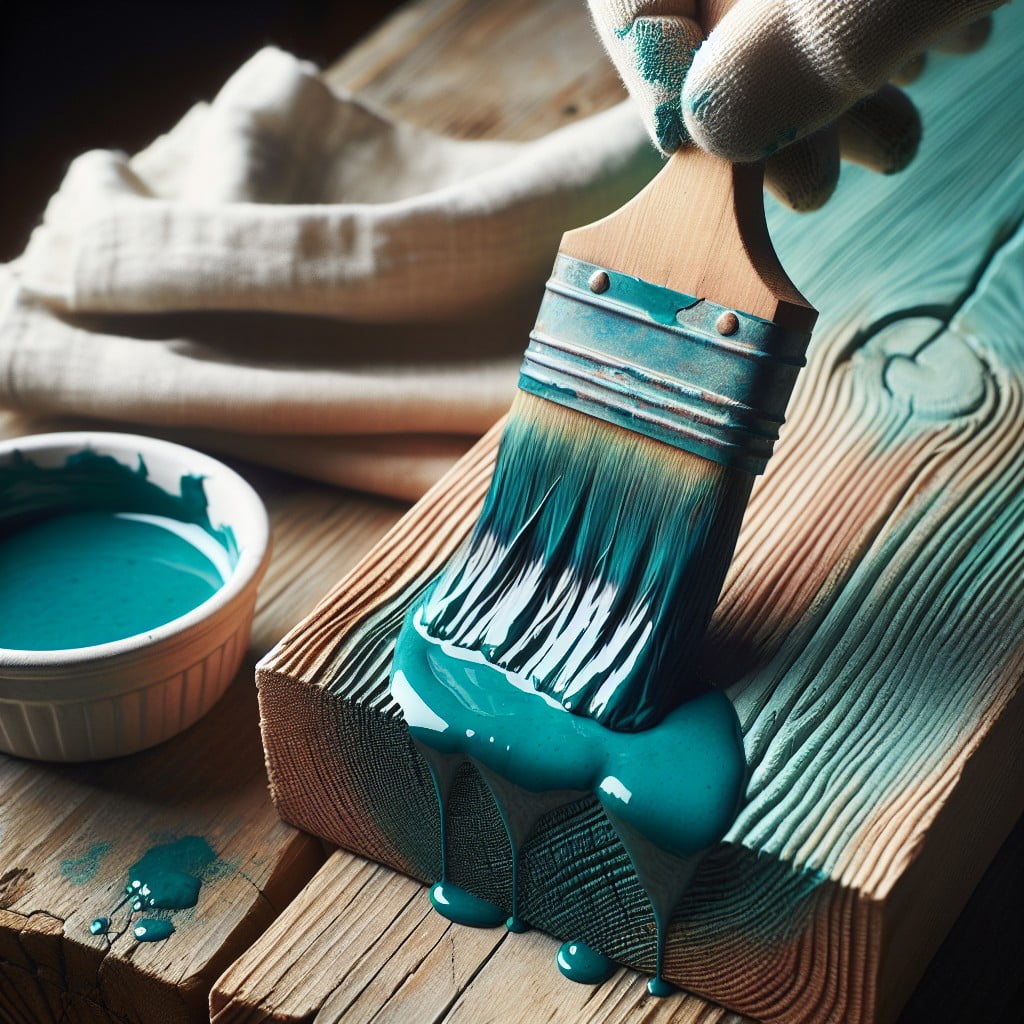
Chalk paint is celebrated for its matte finish and its ability to adhere to a variety of surfaces without the need for priming and sanding. Its formulation allows for easy application, making it a favorite among DIY enthusiasts.
The key ingredients include calcium carbonate, talc, and pigment, which contribute to its thick consistency and lend it excellent coverage.
Despite this, its porous nature means it can be susceptible to stains and liquid damage, thus it’s usually sealed with wax or a finishing coat for protection.
When the time comes to remove or alter the finish, the paint’s unique composition responds well to certain removal techniques, such as using vinegar, a gentle, yet effective, household item.
Safety Measures for Removing Chalk Paint
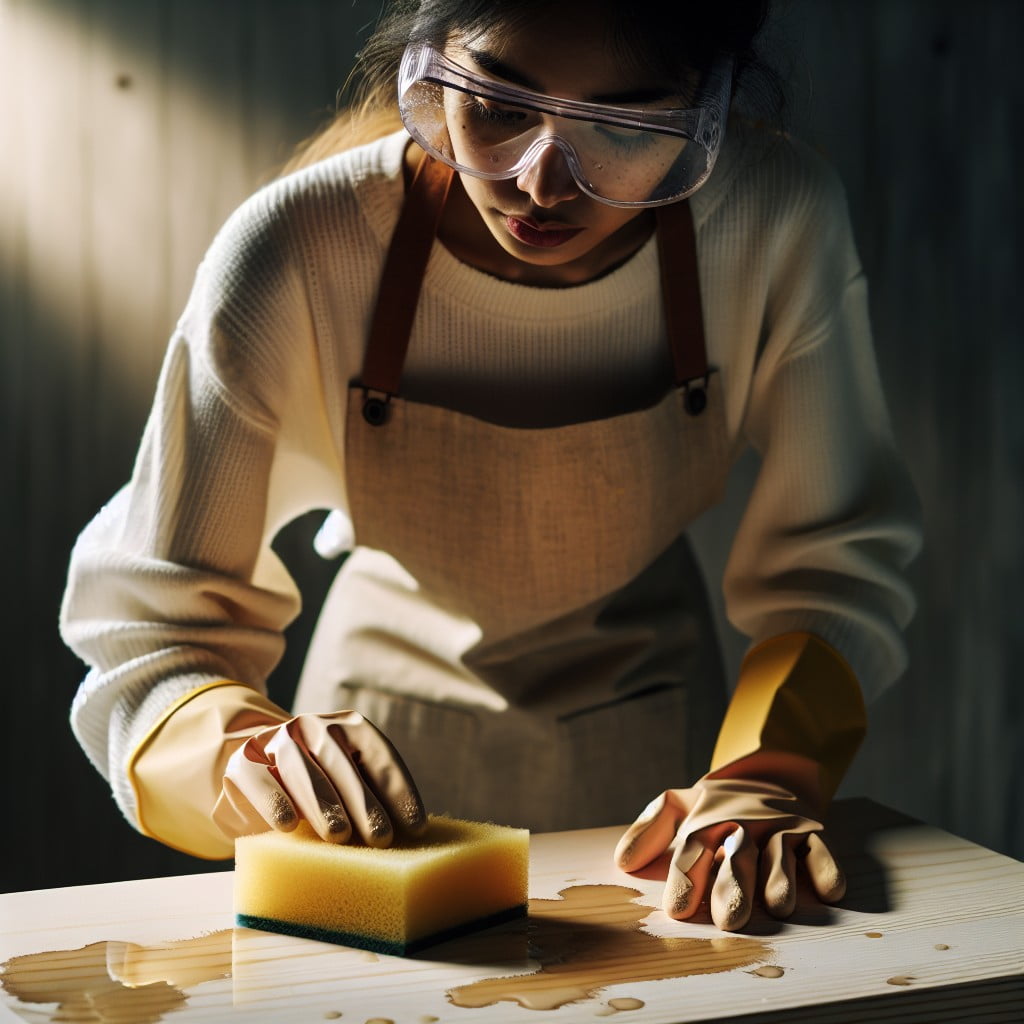
Before starting the removal process, prioritize personal safety:
- Ensure adequate ventilation in your workspace to minimize inhalation of fumes.
- Wear protective gloves to shield your hands from the acidity of the vinegar and prevent skin irritation.
- Use goggles to protect your eyes from potential splashes or drips during the application and removal process.
- If you’re sensitive to strong smells, consider wearing a mask to filter out the vinegar odor.
- Keep a clean water source close by to wash off any accidental spills on skin immediately.
- Make sure you work in an area where accidental spills won’t damage surrounding items or surfaces.
Materials Needed for Chalk Paint Removal
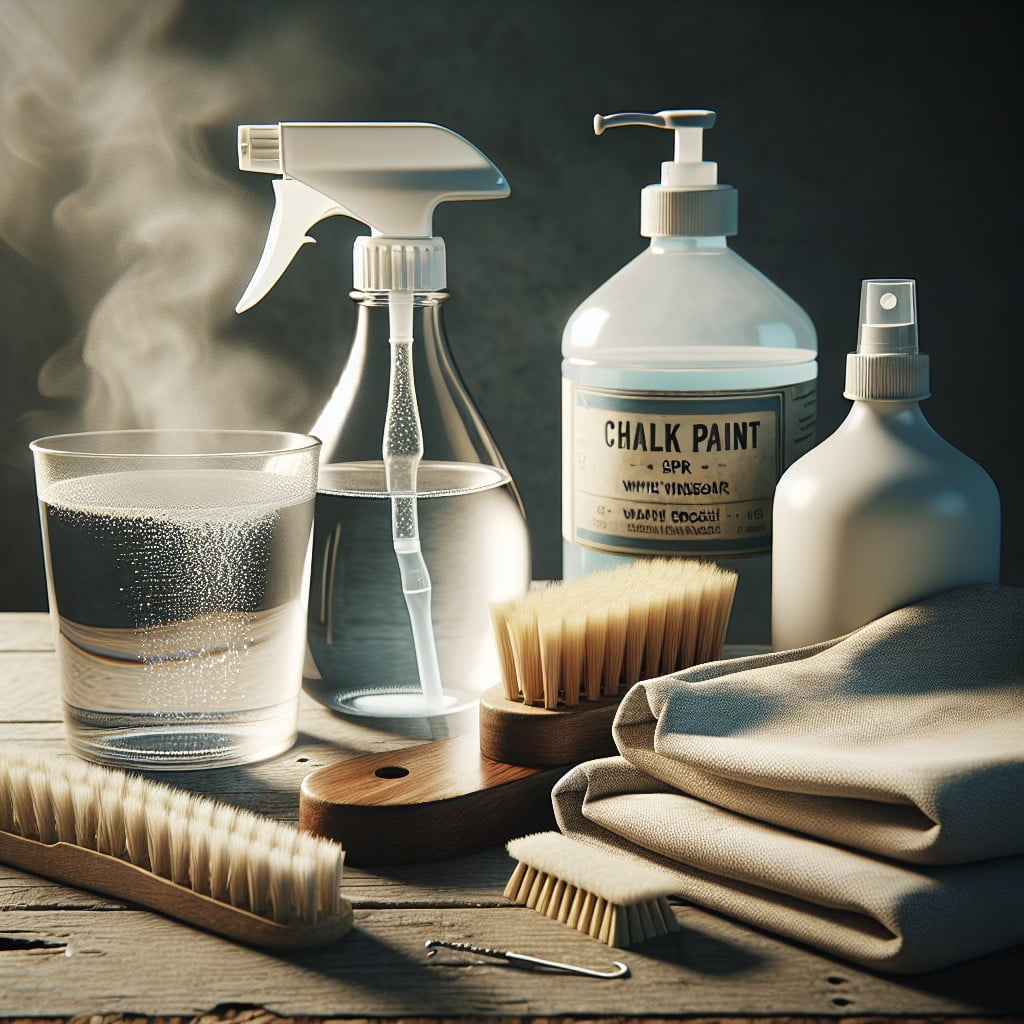
Gather the following essentials before embarking on the chalk paint removal process:
- White vinegar: Acts as a natural solvent to break down the paint.
- Warm water: Helps to dilute the vinegar and soften the paint for easier removal.
- Spray bottle: Useful for applying the vinegar solution evenly across the painted surface.
- Plastic scraper: A non-abrasive tool for gently scraping off the loosened paint without damaging the underlying surface.
- Cleaning cloths: Used for wiping the surface during the process and for clean-up afterwards.
- Protective gloves: To safeguard your hands from the vinegar solution and paint residue.
- Safety goggles: Optional, but recommended to protect eyes from splashes during the removal process.
Remember that ventilation is key, so keep the working area well-ventilated, combining open windows with a fan if necessary, to avoid inhaling fumes.
Preparing the Surface for Chalk Paint Removal
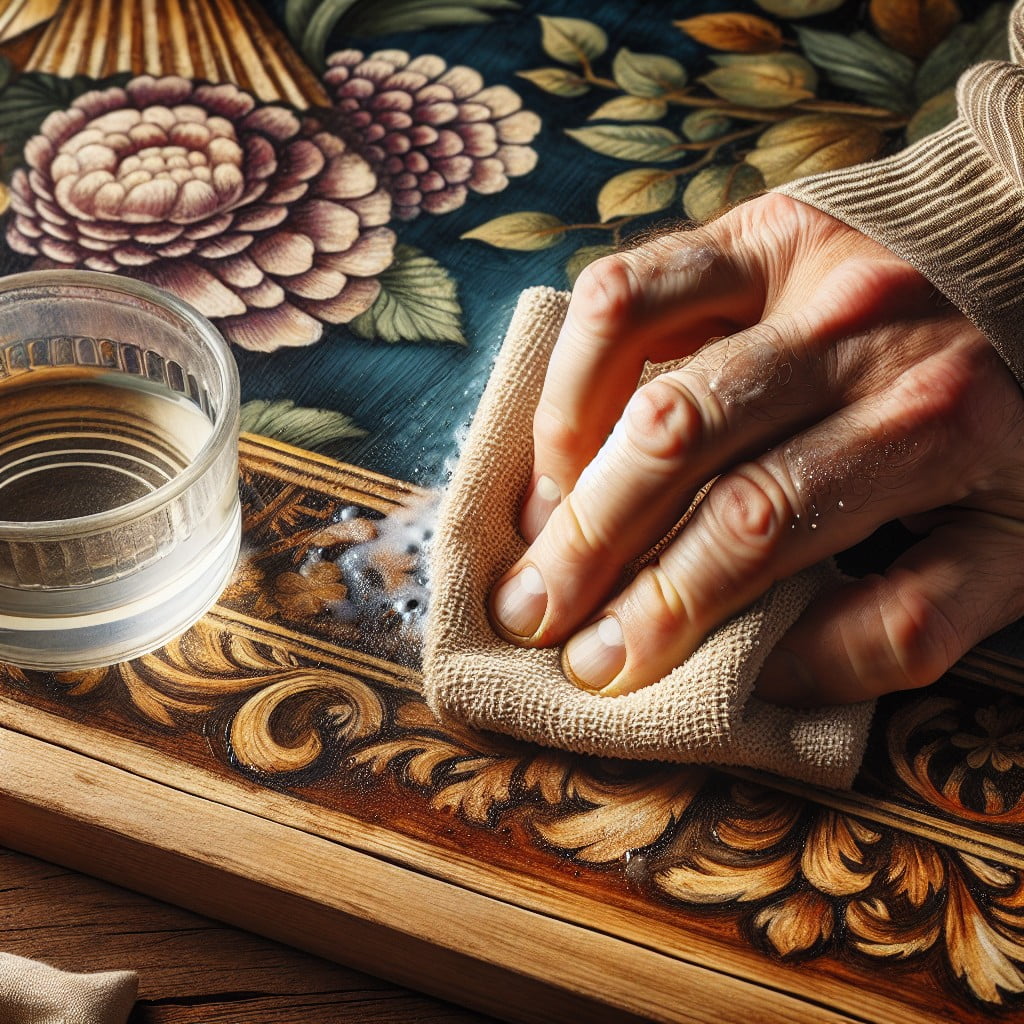
Before you embark on the journey of stripping off that chalky layer, a bit of preparation is key to ensure an effective and safe removal process.
First, move the furniture or item to a well-ventilated area. This step minimizes the inhalation of any fumes or dust. If working indoors, opening windows or using a fan can help circulate the air.
Next, it’s time to protect surrounding surfaces. Lay down plastic sheeting or old newspapers to catch drips and debris. This will not only keep your workspace clean but also make the clean-up much swifter.
Wearing protective gear is also crucial. Don a pair of gloves to shield your hands from the acidity of vinegar and potential splinters. Safety glasses are advisable to protect your eyes from unexpected splashes.
Last but not least, gather all the necessary tools within reach. Having a paint scraper, brushes, or sponges handy will make the transition from prep to paint removal seamless.
A bit of prep work might seem tedious, but it pays off in the smooth execution of your project.
Using Vinegar to Remove Chalk Paint
When employing vinegar to dissolve chalk paint, its acidic nature works to your advantage, breaking down the paint’s bond to the surface. Begin by warming the vinegar to help expedite the chemical reaction—no need to boil, just a gentle heat will do.
Next, apply the warm vinegar to the painted area using a spray bottle or a cloth. Allow it to sit for several minutes; the wait time is crucial for the vinegar to penetrate and soften the paint. You may notice the paint starting to bubble or lift slightly, indicating that the vinegar is working.
If the paint proves stubborn, consider repeating the application, letting the vinegar work a bit longer. Once the paint softens sufficiently, it should be easier to script or peel away with a putty knife or similar tool. Remember, patience is key, as it may take a few applications to fully loosen the paint without damaging the underlying surface.
Scrubbing the Surface After Vinegar Application
Once the vinegar has had time to break down the chalk paint, grab a scrubbing pad or brush. Gently, yet with firm pressure, start working in a circular motion. This helps lift the paint without damaging the underlying surface.
If you encounter resistance or persistent patches, apply more vinegar and allow it to sit for a few more minutes. Do not use metal scouring pads as these might scratch or gouge the material underneath. For intricate areas or tight corners, an old toothbrush can be a precise tool to dislodge the paint.
Remember to scrub evenly to avoid an uneven finish, and focus on one section at a time for thorough removal.
Rinsing the Surface Post Vinegar Treatment
After diligently working the vinegar into the paint, it’s time to wash away the residue. Start by soaking a clean cloth in warm water; this will help to dissolve any remaining vinegar as well as lifting the loosened paint from the surface.
Gently wipe in a circular motion, paying extra attention to crevices and intricate details where paint and vinegar might linger.
Should the paint prove stubborn, consider a second application of warm water, possibly with a mild soap to aid in the cleaning process. It is crucial, however, to avoid saturating the surface—excess water might seep into your material, causing damage or warping, especially if you’re working with wood.
Once you’ve ensured all remnants of vinegar and chalk paint are removed, finish by drying the surface thoroughly with a fresh towel. A dry surface prevents moisture-related issues and preps the item for any follow-up treatments or refinishing.
Post-Removal Clean-up Strategies
Once you’ve successfully removed the chalk paint, it’s important to thoroughly cleanse the area to ensure a clean, smooth surface for any future refinishing. Begin by wiping the surface with a damp cloth to remove any lingering vinegar solution. This helps to neutralize the area and prep it for the next steps.
If you’re dealing with a porous material, it might be a good idea to use a mild detergent mixed with water to eliminate any absorbed vinegar odor. Gently scrub with a sponge or soft brush and then rinse with water to ensure all soap residue is removed.
Where applicable, consider lightly sanding the surface with fine-grit sandpaper. This will help to smooth out any imperfections and provide a good base for new paint or sealant.
Lastly, dry the surface completely with a clean, dry cloth. If you’re planning to repaint or stain the item, allow the material to dry completely for 24 hours to ensure the best adherence of new finishes. Remember, proper post-removal cleaning not only enhances the appearance of your piece but also prolongs its life and readies it for any creative transformations you have in mind.
Maintaining the Surface After Chalk Paint Removal
Once you’ve successfully erased the chalk paint from your surface, ensuring its longevity and appearance is key.
Begin by drying the area thoroughly to prevent moisture from causing damage.
If you intend to repaint, apply a primer to create a smooth, even base that will enhance the adherence and finish of the new paint.
For a natural look, consider treating wood surfaces with a sealant like beeswax or a wood conditioner to protect against future stains and water damage.
Regular cleaning with gentle, non-abrasive cleaners can help maintain the integrity of the surface.
Stay vigilant for signs of wear and address them promptly to keep the item looking its best.
Options for Removing Chalk Paint From Furniture
If vinegar doesn’t complete the job or you’re dealing with a complex piece, there are additional methods for tackling chalk paint on furniture. Chemical strippers, available at hardware stores, can be highly effective but require careful handling and proper ventilation. Sanding is another option, especially for stubborn layers, although it involves elbow grease and can be dusty work.
For intricate woodwork, a putty knife or a detail sander can get into those hard-to-reach crevices. Furthermore, heat guns can loosen the paint, making it easier to scrape off, but they must be used with caution to avoid damaging the wood beneath. Choose the method that best suits your project, considering the effort involved, the tools at your disposal, and the furniture’s value and condition.
FAQ
What dissolves chalk paint?
Chalk paint can be effectively dissolved using a combination of bio strip paint remover and warm, soapy water to eliminate residue.
Does vinegar remove chalk?
Yes, vinegar is capable of removing chalk effectively.
How do you strip paint with vinegar?
To strip paint with vinegar, bring a quart of water and a 1/4 cup of vinegar to a boil, then immerse the painted item in the solution for 15 minutes, or until the paint detaches.
How do you remove old chalky paint?
Old chalky paint can be removed by either pressure-washing or sand-blasting, and if these tools aren’t accessible, scrubbing the affected area with a stiff brush and mild detergent followed by a thorough rinse with a potent stream of water from a garden hose can be a practical alternative.
Can household vinegar effectively strip off chalk paint from furniture?
Yes, household vinegar can effectively strip off chalk paint from furniture.
What is the process involved in using vinegar to remove chalk from brick surfaces?
The process of using vinegar to remove chalk from brick surfaces involves applying a mixture of equal parts white vinegar and warm water onto the chalk marks, letting it sit for 15 minutes, then scrubbing the area with a bristle brush, and finally rinsing it off with water.
How does vinegar interact with chalk paint on a molecular level to aid in its removal?
Vinegar, being an acetic acid, reacts with chalk paint’s calcium carbonate base, breaking down the molecular structure to facilitate the removal process.
Recap:
